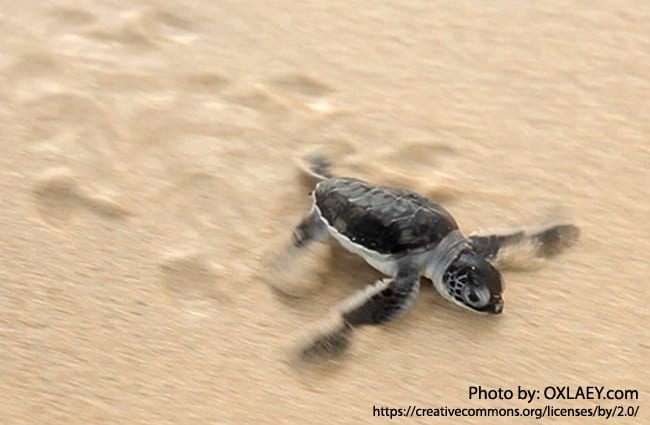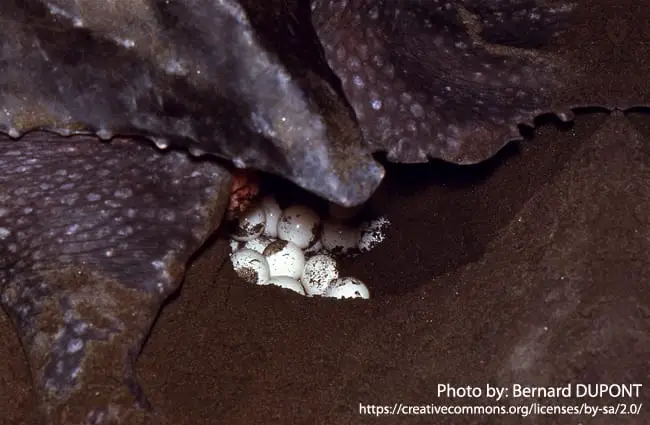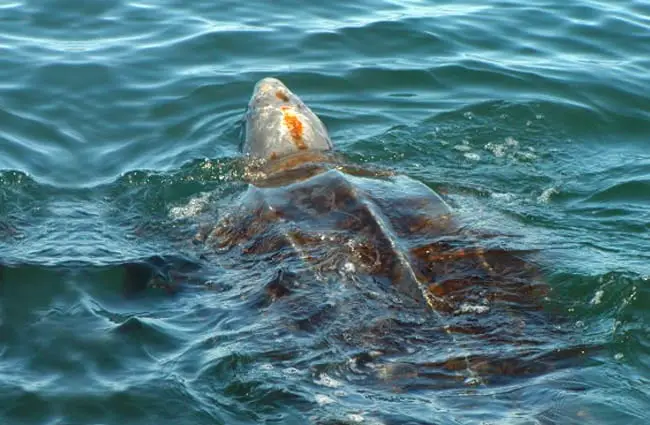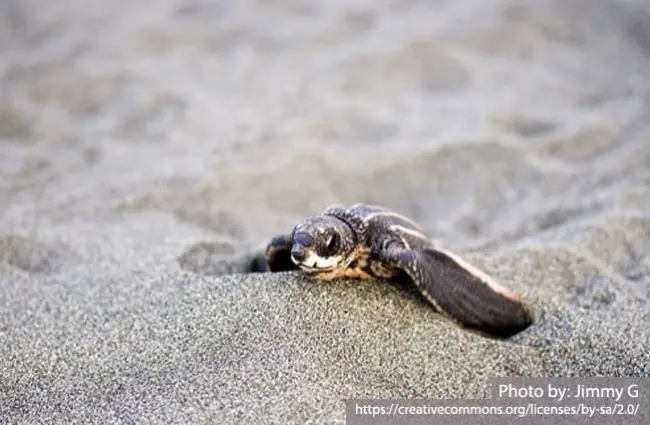The Ocean’s Ancient Wanderer: Unveiling the Leatherback Sea Turtle
Imagine a creature that has roamed the Earth’s oceans for over a hundred million years, a living relic from the age of dinosaurs. Picture a marine giant, capable of diving deeper than any other reptile, enduring icy waters, and migrating across entire oceans. This magnificent voyager is the Leatherback Sea Turtle, Dermochelys coriacea, a true marvel of evolution and a testament to the resilience of life in our planet’s vast aquatic realm. Far from the typical hard-shelled turtles, the Leatherback stands alone, a unique lineage with adaptations that allow it to thrive in environments most other reptiles would find impossible. This comprehensive guide delves into the fascinating world of the Leatherback, from its basic biology to its profound ecological role and its intricate relationship with humanity.
Unveiling the Leatherback Sea Turtle: Basic Biology
A Shell Like No Other: Unique Anatomy
The most striking feature of the Leatherback Sea Turtle is its distinctive carapace, which gives the species its common name. Unlike other sea turtles that possess bony, hard shells, the Leatherback’s shell is composed of a mosaic of small, interlocking dermal bones beneath a thick, leathery skin. This flexible, rubbery shell is ridged with seven prominent keels running down its length, streamlining the turtle’s body for efficient movement through water. Adults can reach impressive sizes, often exceeding 2 meters (6.5 feet) in length and weighing over 900 kilograms (2,000 pounds), making them the largest of all living turtles and the fourth-heaviest modern reptile. Their powerful, paddle-like front flippers can span up to 2.7 meters (9 feet), propelling them through the water with remarkable speed and agility.

Global Nomads: Habitat and Distribution
Leatherback Sea Turtles are true pelagic wanderers, inhabiting the widest global distribution of any reptile. They are found in all tropical and temperate oceans, from the frigid subpolar waters of the North Atlantic and Pacific to the warm, equatorial seas. Their extraordinary ability to maintain a body temperature warmer than the surrounding water, a form of regional endothermy, allows them to venture into colder latitudes that would be lethal to other reptiles. These incredible animals undertake epic migrations, traveling thousands of kilometers between their tropical nesting beaches and their colder feeding grounds. Key nesting areas include beaches in the Caribbean, South America, West Africa, and parts of Southeast Asia, while feeding grounds extend to areas like the coasts of Canada, the United States, and Europe.
The Jellyfish Gourmand: Diet and Feeding Habits
The diet of the Leatherback Sea Turtle is highly specialized, consisting almost exclusively of soft-bodied invertebrates, primarily jellyfish and salps. Their unique mouth and throat are perfectly adapted for this gelatinous fare, featuring sharp, backward-pointing spines that prevent slippery prey from escaping. Despite the low nutritional value of jellyfish, Leatherbacks consume enormous quantities to sustain their massive bodies and high metabolic rates, especially when migrating or nesting. This dietary preference makes them crucial predators in marine ecosystems, helping to regulate jellyfish populations. Unfortunately, this specialization also makes them particularly vulnerable to plastic pollution, as plastic bags floating in the ocean can easily be mistaken for jellyfish, leading to fatal ingestion.

Life’s Journey: Mating and Reproduction
The reproductive cycle of the Leatherback Sea Turtle is a testament to ancient instincts. Mating typically occurs in the warm waters near nesting beaches. Female Leatherbacks return to specific sandy beaches every two to four years to lay their clutches, a remarkable feat of navigation. Under the cover of darkness, they haul their immense bodies onto the shore, dig a deep nest cavity with their powerful hind flippers, and deposit around 60 to 90 yolked eggs, often interspersed with a layer of smaller, yolkless eggs. They may lay multiple clutches, sometimes up to 10, within a single nesting season, with intervals of about 9 to 10 days between each nesting event. The incubation period lasts approximately 60 to 70 days, and like many reptiles, the sex of the hatchlings is determined by the temperature of the sand during incubation, a phenomenon known as temperature-dependent sex determination (TSD). Warmer temperatures generally produce more females, while cooler temperatures yield more males. Once hatched, the tiny, vulnerable hatchlings instinctively scramble towards the ocean, facing numerous predators in their perilous journey.

Diving Deeper: Advanced Insights for the Curious Mind
Echoes of the Past: Evolutionary History
The Leatherback Sea Turtle represents a distinct evolutionary branch within the turtle family tree, having diverged from other sea turtles approximately 100 to 150 million years ago. Its lineage, Dermochelyidae, is characterized by the absence of a bony carapace fused to the skeleton, a feature unique among extant turtles. This ancient design, with its flexible, leathery shell, is thought to be an adaptation for deep diving, allowing the shell to compress without fracturing under immense pressure. Furthermore, their large body size and specialized circulatory system, including countercurrent heat exchangers in their flippers, enable them to maintain a core body temperature significantly higher than the surrounding water, a crucial adaptation for surviving in cold ocean environments. This physiological marvel allows them to exploit food resources in colder, more productive waters, a niche unavailable to most other marine reptiles.

An Ocean’s Architect: Ecosystem Role and Interactions
As primary predators of jellyfish, Leatherback Sea Turtles play a vital role in maintaining the balance of marine ecosystems. By consuming vast quantities of jellyfish, they help prevent potential jellyfish blooms, which can have cascading effects on fish populations and overall ocean health. Their presence indicates a healthy marine environment, rich in the planktonic life that supports jellyfish. However, their eggs and hatchlings are a food source for a variety of terrestrial and avian predators, including crabs, raccoons, birds, and even jaguars in some regions, forming an important link in coastal food webs. Adult Leatherbacks, due to their immense size, have few natural predators, though large sharks and killer whales may occasionally prey on them.
Giants Among Us: Fascinating Facts and Records
The Leatherback Sea Turtle holds several impressive records in the animal kingdom:
- Deepest Diver: They are known to dive to depths exceeding 1,200 meters (3,900 feet), deeper than any other reptile, allowing them to hunt jellyfish in the mesopelagic zone.
- Fastest Reptile: While not known for sustained speed, they can reach burst speeds of up to 35 kilometers per hour (22 mph) in the water.
- Largest Sea Turtle: As mentioned, they are the largest of all living turtles.
- Longest Migrations: Some individuals undertake migrations of over 16,000 kilometers (10,000 miles) between feeding and breeding grounds, a truly epic journey.
- Warm-Blooded Reptile: They are one of the few reptiles capable of generating and retaining body heat, allowing them to forage in cold waters. This unique thermoregulation is achieved through a combination of their large size (gigantothermy), a thick layer of fat, and specialized blood flow.
Humanity’s Connection: Culture, Conservation, and Coexistence
Cultural Footprints: Leatherbacks in Human Lore
Throughout history, the majestic presence of sea turtles, including the Leatherback, has woven itself into the cultural fabric of coastal communities worldwide. In many indigenous cultures, sea turtles symbolize longevity, wisdom, and creation. Their epic migrations and ancient lineage have inspired myths and legends, often portraying them as sacred beings or navigators of the spirit world. Historically, some cultures have utilized sea turtles for food, medicine, or ceremonial purposes, though the Leatherback’s meat is generally not considered palatable due to its oily texture and potential toxicity. However, their eggs have been a traditional food source in many nesting regions, a practice that has contributed to population declines in some areas.
A Call to Action: Human Interaction and Conservation
Despite their ancient lineage and incredible adaptations, Leatherback Sea Turtles face severe threats, primarily due to human activities. The species is currently listed as Vulnerable globally by the IUCN, with several subpopulations critically endangered. Major threats include:
- Fisheries Bycatch: Accidental entanglement in fishing gear, such as longlines, gillnets, and trawls, is a leading cause of mortality.
- Plastic Pollution: As jellyfish specialists, Leatherbacks frequently mistake plastic bags and other debris for food, leading to internal blockages and starvation.
- Habitat Loss and Degradation: Coastal development, erosion, and artificial lighting disrupt nesting beaches, making them unsuitable for reproduction.
- Climate Change: Rising sea levels threaten nesting beaches, and increasing sand temperatures can skew sex ratios towards females, potentially impacting future breeding success.
- Egg Poaching: Illegal harvesting of eggs for consumption continues in some regions, severely impacting reproductive output.
Conservation efforts are critical and multifaceted, including the establishment of marine protected areas, the use of Turtle Excluder Devices (TEDs) in fishing nets, public awareness campaigns, and the protection of nesting beaches. International cooperation is essential to safeguard these migratory giants.

Encountering the Leatherback: Guidance for Enthusiasts and Guardians
Seeking the Giants: Where and How to Spot Them
For the dedicated animal lover or aspiring zoologist hoping to witness a Leatherback Sea Turtle in the wild, patience and responsible planning are key. The best opportunities typically arise during nesting season on specific tropical beaches. Prime locations include:
- Caribbean: Trinidad and Tobago, Costa Rica (Tortuguero National Park), St. Croix (Sandy Point National Wildlife Refuge), French Guiana.
- Pacific: Papua New Guinea, Solomon Islands, Indonesia, and some beaches in Mexico and Costa Rica.
- Atlantic: Gabon, South Africa.
Nesting usually occurs at night, from late spring through summer, depending on the region. Observing nesting females or hatchlings requires joining organized, permitted tours led by experienced guides, as disturbing these animals can have severe consequences for their survival. During feeding migrations, sightings are much rarer and typically occur far offshore, making them difficult for casual observers. Whale watching or pelagic birding tours in areas known for jellyfish blooms might offer a slim chance, but direct encounters are highly improbable.
Respectful Encounters: What to Do if You See One in the Wild
Encountering a Leatherback Sea Turtle in its natural habitat is a privilege that comes with a responsibility to ensure its safety and well-being. If you are fortunate enough to spot one, whether on a beach or in the water, adhere to these guidelines:
- Maintain Distance: Keep a significant distance, at least 20 meters (65 feet), from the turtle. Never approach, touch, or attempt to interact with it.
- Be Quiet and Still: If on a nesting beach, avoid loud noises, sudden movements, and bright lights, especially flash photography, which can disorient nesting females or hatchlings.
- Do Not Obstruct: Never block a turtle’s path to or from the ocean.
- Report Injuries or Strandings: If you find an injured, entangled, or stranded turtle, immediately contact local wildlife authorities, park rangers, or a sea turtle rescue organization. Provide precise location details and do not attempt to move or assist the animal yourself, as this can cause further harm or be dangerous.
- Observe Ethically: If participating in a guided tour, always follow the instructions of your guide.
Remember, these are wild animals, and their conservation depends on respectful human interaction.
Caring for a Colossus: Considerations for Zookeepers
Caring for a Leatherback Sea Turtle in captivity presents immense challenges, so much so that they are very rarely kept in aquariums for extended periods. Their specialized needs make long-term captive care exceptionally difficult, and most institutions prioritize rescue and rehabilitation with the goal of release. For a zookeeper tasked with temporary care, the following considerations are paramount:
- Enclosure Size: Leatherbacks are enormous and highly migratory. An enclosure must be exceptionally large, offering ample space for swimming and turning, far beyond what is typically available for other sea turtle species.
- Water Quality: Pristine water quality is non-negotiable. Advanced filtration and constant monitoring of parameters like temperature, salinity, pH, and dissolved oxygen are essential.
- Dietary Needs: Replicating their specialized jellyfish diet is a significant hurdle. Zookeepers must provide a diet that mimics the nutritional content and soft texture of jellyfish, often involving a combination of fish, squid, and gelatin-based foods, supplemented with vitamins and minerals. Careful monitoring for digestive issues is crucial.
- Temperature Regulation: While they are endothermic, maintaining an appropriate water temperature that supports their metabolic needs without causing stress is vital.
- Stress Reduction: Leatherbacks are prone to stress in confined environments. Minimizing human interaction, providing a calm environment, and avoiding sudden changes are important.
- Medical Care: Regular veterinary check-ups, blood work, and prompt treatment for any injuries or illnesses are critical. Access to specialized marine reptile veterinarians is a must.
What to Avoid:
- Small Enclosures: Confining a Leatherback in an inadequate space will lead to stress, injury, and failure to thrive.
- Improper Diet: Feeding an inappropriate diet will lead to malnutrition and health problems.
- Rough Handling: Their leathery shell is sensitive, and rough handling can cause injury.
- Lack of Enrichment: While challenging for such a large, pelagic animal, efforts should be made to provide environmental enrichment to prevent boredom and promote natural behaviors.
The primary goal for any Leatherback in human care should always be rehabilitation and release back into the wild, given their complex biology and migratory nature.

Guardians of the Deep: A Future for the Leatherback
The Leatherback Sea Turtle is more than just a large reptile; it is a living testament to evolutionary endurance, a critical component of marine ecosystems, and a powerful symbol of the ocean’s wild beauty. Its incredible journeys across vast oceans, its unique adaptations to extreme environments, and its ancient lineage inspire awe and wonder. However, its future hangs precariously in the balance, threatened by the very species that marvels at its existence. Understanding the Leatherback’s biology, appreciating its ecological significance, and actively participating in conservation efforts are not just academic exercises; they are essential steps towards ensuring that these magnificent guardians of the deep continue their ancient migrations for generations to come. By protecting the Leatherback, we are not only preserving a species, but also safeguarding the health and biodiversity of our global oceans.


![Red Angus Closeup of a beautiful Red Angus cowPhoto by: U.S. Department of Agriculture [pubic domain]https://creativecommons.org/licenses/by/2.0/](https://animals.net/wp-content/uploads/2020/03/Red-Angus-4-238x178.jpg)




![Red Angus Closeup of a beautiful Red Angus cowPhoto by: U.S. Department of Agriculture [pubic domain]https://creativecommons.org/licenses/by/2.0/](https://animals.net/wp-content/uploads/2020/03/Red-Angus-4-100x75.jpg)

